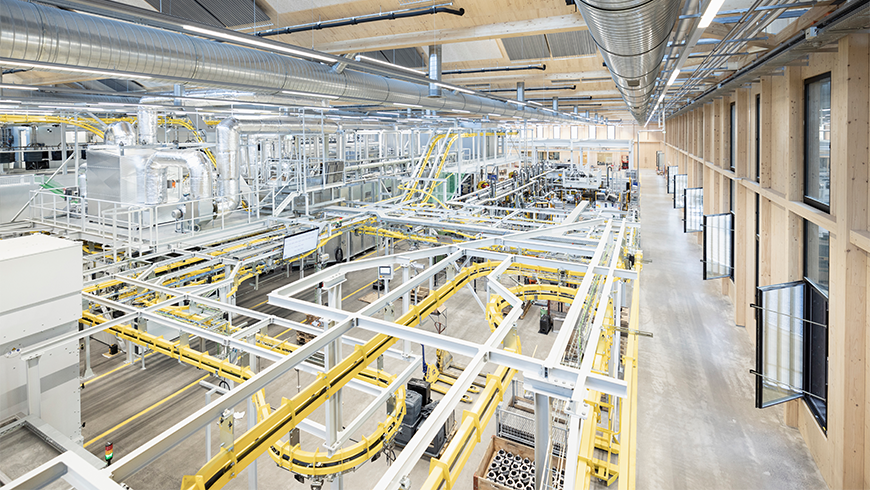Decarbonization of Switzerland's industry
Aiming at an industry without CO2 emissions

Focus on a new production process for hydrogen
To decarbonize high-temperature industrial processes, the third largest energy consumers in Switzerland, a novel hydrogen production process based on the splitting of hydrogen (chemically H2) from methane (CH4) – a process called methane pyrolysis – will be applied in a planned demonstration plant in Zug. Methane is the main component of fossil natural gas and biogas, but can also be produced synthetically from renewable hydrogen and CO2. In the planned demonstrator in the Zug Tech Cluster, pyrolytically generated hydrogen is to replace fossil natural gas in V-ZUG's enamelling furnaces, in order to demonstrate with this pilot project how such applications can be decarbonized. In parallel, the hydrogen will also be used by other industrial partners in their processes. In contrast to previous industrial hydrogen production, the pyrolysis of methane does not produce CO2 as a by-product, but solid (powdered) carbon, which is to be further developed into a resource for construction and agriculture as part of the association's activities, for example as an admixture in building materials or enrichment of humus.
What is special about this new approach is that if synthetic methane is used instead of fossil natural gas for pyrolytic hydrogen production, this results in negative CO2 emissions! This is because more CO2 has to be removed from the atmosphere for the production of synthetic methane than is subsequently emitted trough all steps of the multi-step process. The carbon that is split off via methane pyrolysis is thus permanently removed from the atmosphere. Technologies with negative CO2 emissions are urgently needed on a large scale if Switzerland is to achieve its CO2 targets because around a quarter of the CO2 emissions generated in Switzerland today (or 10 million tons) cannot be reduced by switching to renewable energy.
In parallel to pyrolytic hydrogen production, a decentralized electrolysis plant for the electricity-based production of hydrogen from water is also to be realized. Such plants supply high-purity hydrogen, which is, for instance, required for fuel-cell-powered trucks. Water electrolysis has higher overall efficiencies than methane pyrolysis, but does not achieve as low (or even negative) CO2 emissions. In Zug, a decentralized approach for electrolysis, not tied to a power plant, is to be implemented because it avoids the ineffective distribution of hydrogen via trucks on the road. To avoid the need for decentralized power grid expansion, a "grid-serving" operating concept is to be developed in collaboration with the local power supplier, based on the utilization of free power grid capacities.






